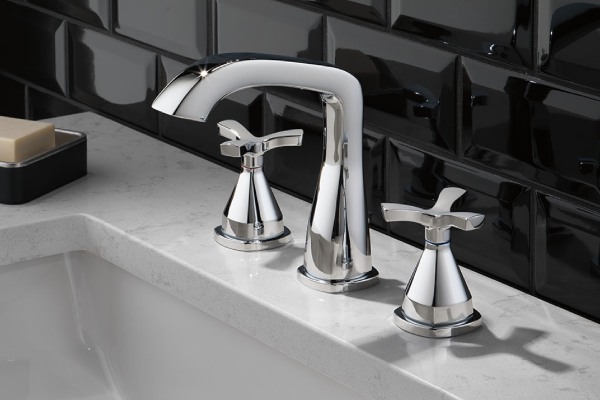A faucet is an essential and functional part of your sink to control and turn the running water on and off as needed in your kitchen, bathroom, laundry room, or other places. While the faucet in your kitchen might look the same as your bathroom one, they may be very different internally. It is necessary to know a little bit about the interior of a faucet to help you find a replacement or to deal with any type of repairs. Below, we will present you four different types of faucets, their ins and outs, and the factors you should consider while renovating, repairing, or simply upgrading.
Types of Faucets
-
Ball Faucets
Ball faucets are very common in kitchen sinks and were the first washerless type. You can identify them by their single handle that moves over a rounded ball-shaped cap right above the base of the faucet spout. This type has a single handle which is responsible for controlling a special metal or plastic inside the body of the faucet. This ball has slots or chambers in it along with rubber O-rings and spring-loaded rubber seals. The ball’s position determines the ball/lever assembly’s control over the flow and temperature mixing of the water coming out of the faucet.
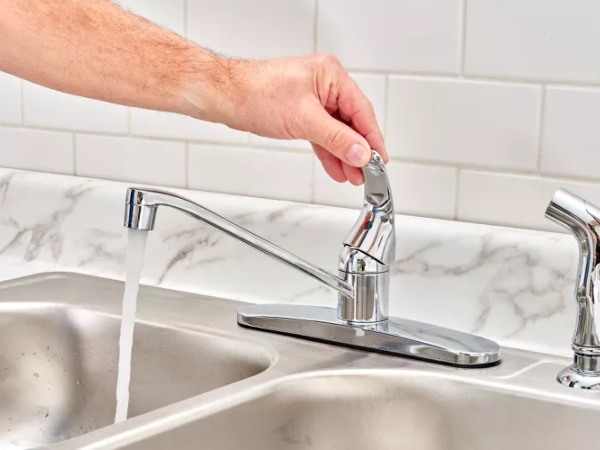
The exterior of the faucet might be as durable as other types of faucets, but the inner part may not be so and may require more maintenance than others. Since ball faucets are made up of numerous parts, they tend to leak more than other washerless faucets like the cartridge faucet or disc faucet. One con, however, is that the ball faucet is the least expensive because of its older technology.
Pros
- Sleek single handle
- Most common type of faucet for kitchens
- Affordable
Cons
- Tends to leak
- Many complicated parts
- Can be tough to pinpoint the leak
2. Disc or Disk Faucet
Ceramic disc faucets are the latest innovation of the modern faucet technology. You can identify them by their single lever or a wide cylindrical body. This type of faucet mixes hot and cold water inside a mixing slot called a pressure balance cartridge. Talking about its mechanism, two ceramic discs at the bottom of the chamber will raise and lower to control the water flow volume. Meanwhile, a side-to-side rotation of the handle will control the temperature. These faucets are high-quality, very reliable, and need less repairing. These qualities also make them highly durable, making them more expensive than other types of faucets.
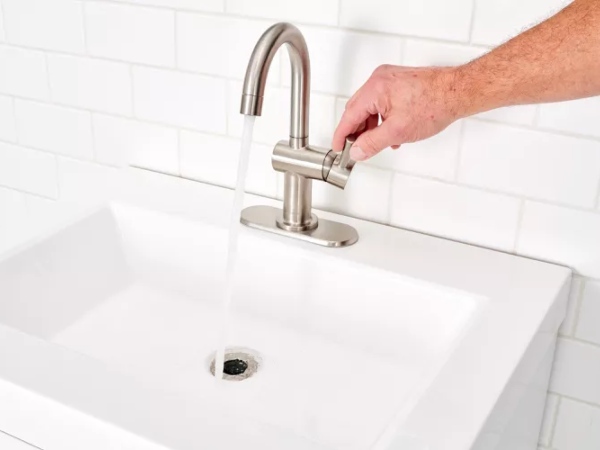
Disk faucets are also very sensitive to touch which makes them an ideal choice for people who have arthritis or hand grip challenges. One barely needs to move the lever to run the water.
Pros
- Newer and more reliable technology
- High quality
- Stands up to extreme temperatures
Cons
- Disks break/erode over time
- Takes time to get used to the feel of the faucet
- More expensive type of technology
Also, Read 10 Low Light Succulents Perfect For Your Office or Home
3. Cartridge Faucet
Double-handle cartridge faucets have an uncanny resemblance to compression water faucets. But, you can distinguish them by how the handles feel when used. A compression faucet needs you to compress the washer to close the water flow. The cartridge faucet’s action, on the other hand, is smooth and consistent. A half-turn and the handle goes from the off to the on position. Turning off the faucet requires no added pressure as with a compression faucet.
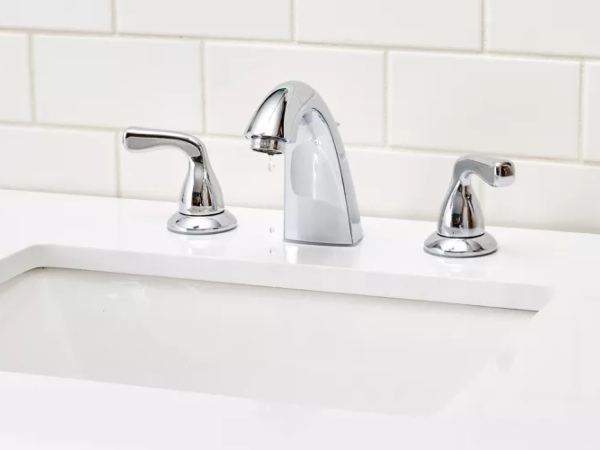
Experts consider the cartridges durable and easily replaceable, which means that this type of faucet might need less maintenance than other types in the market. But, the cartridges may be costly to replace, some may cost more than $100, depending on the manufacturer and the model of your sink.
Pros
- Works smoothly
- Cartridges are generally durable
- Easy to fix
Cons
- Hard water deposits can block cartridges
- Seals at the bottom of cartridges can still fail
- Replacement cartridges for some brands can be costly
4. Compression Water Faucet
Ever since the on-demand indoor plumbing started, compression washers have been there. You’ll mostly find them in older homes and the updated versions in utility sinks in newer homes even today. While these faucets are the least expensive of all, they are not as long-lasting as most of them are prone to leaks and maintenance. The good thing is replacement parts are cheap.
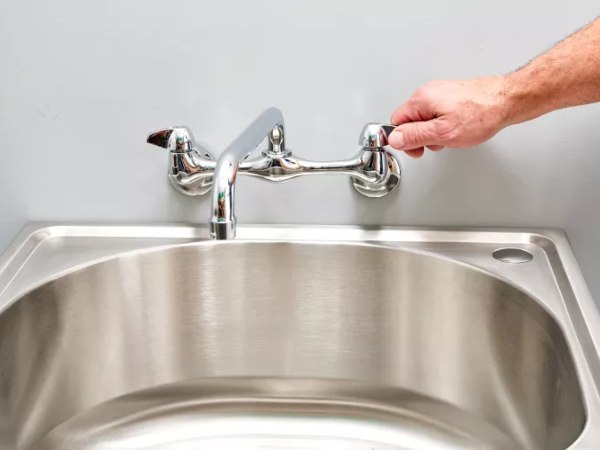
We can identify compression washer faucets by their separate hot and cold water handles and their action needing you to tighten the handles down to turn off the water flow. These faucets operate by using a compression stem which is a kind of glorified screw that has a washer at the end of it pressing against a valve seat.
Pros
- Low cost
- Fits the aesthetics of older-style homes
- Easy to repair even though it’s quick to wear out
Cons
- Prone to leaks
- Higher maintenance than other valve types
- Older technology
How to Choose a Faucet
Every type of faucet is meant to last for years. However, there are maintenance (worn protective coatings, forcing handles to move too hard) and environmental issues (hard water and the buildup of limescale) that wear them sooner. You will get the signs when you need a new faucet. The tip of the tap looks rusty, the finishing looks dull or flaking off, the handles get leaky, and even when you try the repair work, the leaks won’t stop. If that is the case, you can replace the entire faucet with one type or with another but not the assembly of the faucet. If you have an older faucet with a cartridge assembly, you can replace the whole faucet with a single-handle model that consists of a ceramic disc assembly.
Think of your sink configuration as well. If you’re thinking of replacing a two-handle faucet with a single-handle faucet, you can do that too. Ensure that the baseplate of the new single-handle faucet will effectively cover the remaining holes. But, if there is only one hole, you will need to stick with a single-handle faucet.
If you’re unable to decide which faucet to buy, consider these five factors:
- If you are not handy at home, choose an easy-to-fix cartridge faucet.
- If you have a disability of any kind or arthritic issues, choose a disk faucet which is very easy to turn on and off.
- If you prefer a basic, sleek single-handle faucet, opt for an affordable ball-type faucet.
- If you want the most durable, updated type of faucet, choose a disk faucet, but remember it can be costly to fix, and you’ll likely need a professional to repair it.
- If you have an older home with compression faucets and want to upgrade, consider consulting a plumber just to make sure it’s a go.
FAQs
Q: What is the purpose of a faucet?
A: A faucet is a device that controls the flow of a liquid or gas from a pipe or container. Sinks and baths have faucets attached to them.
Q: How many holes are required for a faucet?
A: 4-hole sinks allow for a two-handle faucet and a sprayer or soap dispenser. 3-hole sinks allow for two-handle faucets only without accessories. 2-hole sinks allow for a single-hole faucet, and an accessory, like a sprayer. 1-hole sink has no deck plate and is designed for a single-handle faucet.
Q: How to maintain or clean faucets?
A: The mild acid in vinegar will break down mineral deposits without damaging faucet finishes. Follow up by buffing faucets dry with a soft towel. Consider applying a small amount of mineral oil to faucets using a cloth; this helps maintain shine. Regular deep cleanings keep faucets free of stubborn deposits.
Also, Read What is Borax? Know its amazing benefits to use around your houses
